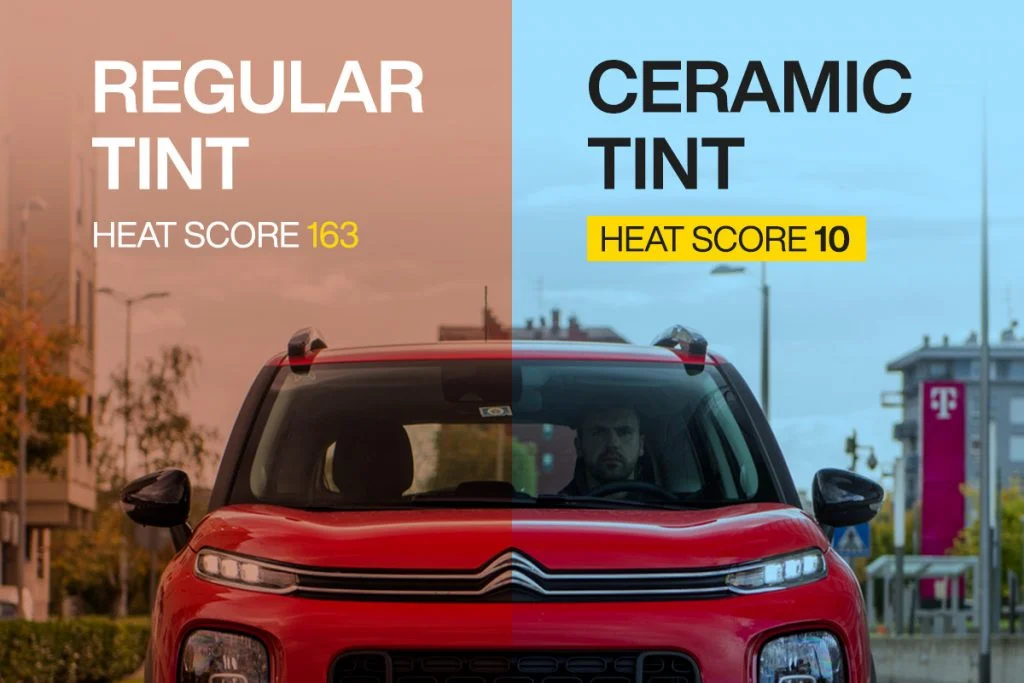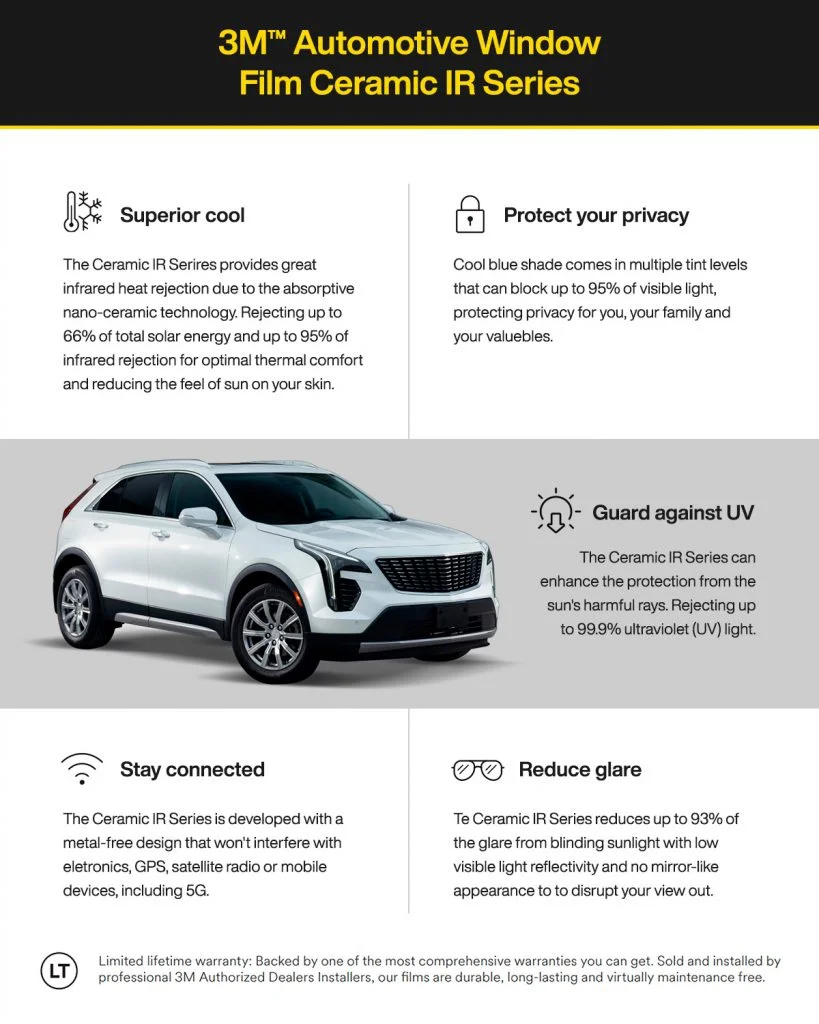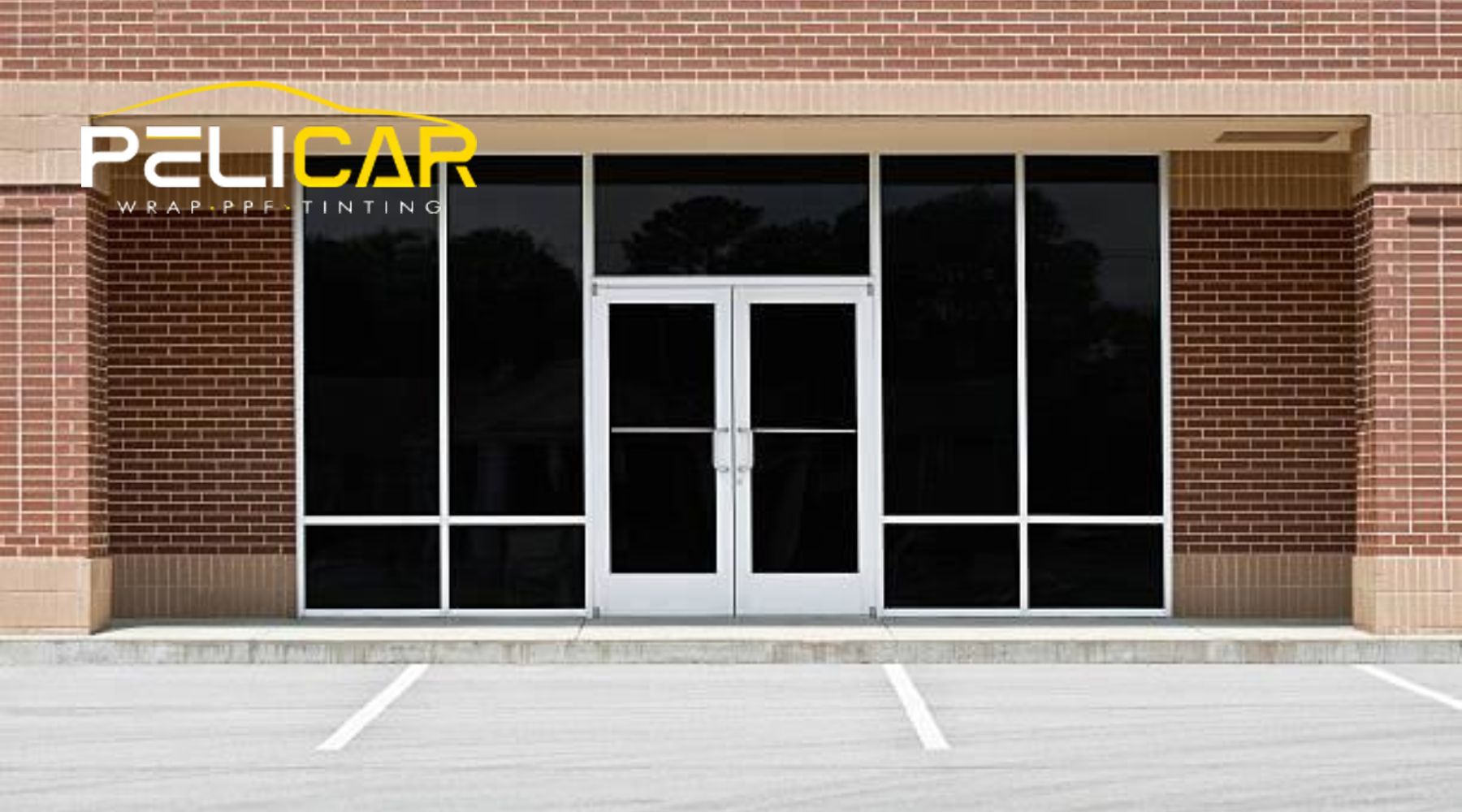Choosing the best window tint film for your car can be difficult. With so many different types, tones, and colors, how exactly can you tell which is right for you?
Don’t sweat! We got you covered! To give you a hand, we had a group of experts in window tinting put this article together for you!
Check out what they have to say about regular and ceramic tint film, and learn about the benefits of each and the differences between them.
Regular window tint
The term ‘regular’ refers to dyed tint products. These are made of thin layers (usually laminated or polyester) and tinted in different shades.
Tones vary from 10% and 90%, and the higher the percentage, the more light they block out. Glass with a 50% tone, for example, which isn’t too dark, will only block out half the brightness, while a 5% film is so dark it’s illegal in some states.
Not sure what percentages are allowed in the state of Massachusetts? Read: Rules of the Tint: MA Tint Regulations.
You’ll find regular window tint mostly in shades of black, brown, and gray, but if you look hard enough, you can find others as well. Though variety is still limited compared to other types of film.
Regular window tint is the most affordable, and consequently, the most popular. In terms of functionality, it does have fewer benefits.
That’s because even though it’s highly effective in blocking out light, it doesn’t do the same for UV rays. Depending on the brand you choose for your car, the film can actually cause the glass to heat, leading to a higher temperature inside your vehicle.
Is regular window tinting a good investment?
Well, that depends on what you want. If that’s only to block the light out of your vehicle and give yourself some more privacy and style, it’ll work for you.
Plus, besides paint, regular tint film also gets a scratch-resistant coating. It might not hold against sharp objects and projectiles, but it works well enough to stand natural wear.
Though we mentioned this before, it doesn’t hurt to remember that it is the most accessible product type on the market. So, regular window tinting may be a good temporary solution if you’re on a tight budget.
Ceramic window tint
Ceramic window tinting is similar to regular window tinting in that it’s also made of multiple polyester layers. So, how exactly are regular and ceramic window tinting different?
In terms of composition, ceramic is a key element compared to the material used in other products.
The ceramic that coats the car windows is made using nano-ceramic technology and reflects and blocks visible sunlight, infrared light, and ultraviolet rays.
It provides high heat rejection due to the absorbing technology, resulting in up to 66% rejection of total solar energy and up to 95% rejection of infrared heat. That makes for an ideal temperature and reduces the feel of the sun on your skin.
Plus, ceramic window tint is much more resistant and less susceptible to scratching, tearing, cracking under sudden force or constant pressure due to its composition.

Ceramic 3M™ window tinting
The 3M™ ceramic tint film set gives you the two main benefits of window tint: exceptional visibility and heat reduction.
Also, thanks to the advanced technology used, the 3M™ ceramic tint film set will keep your car looking great for years.

Differences between regular and ceramic window tint: check out the pros and cons
Regular window tint
Pros:
- Is the most affordable product type on the market. So, if you want a tint but don’t have the money, then a regular dyed tint may be perfect for you.
- Regular tint products block visible light and absorb some heat from the sun.
- Regular window tint is great for people who value their privacy but aren’t worried about protection from UV rays or infrared light.
Cons:
- These products aren’t the most long-lasting solution on the market. They tend to fade and discolor at a faster rate. Which means that even if they never get damaged from an external source, they may still need to be replaced frequently.
- Regular tinting doesn’t do very well at blocking UV rays or infrared light, which typically results in more inside heat and thermal stress on windows.
- Regular products can be damaged fairly easily compared to ceramic tints.
- Dyed tinting with metallic components can interfere with cellular and Wi-Fi signals.
Ceramic window tint
Pros:
- Ceramic tint products are great when it comes to blocking visible sunlight, infrared light, and UV rays, meaning they will stop the inside of your vehicle from heating up.
- Ceramic tinting may register a thermal reading up to 5 times lower than that of a standard tint product.
- These products are non-metallic, which means you won’t have to worry about poor reception or Wi-Fi signals within your vehicle.
- Ceramic tinting gives you the highest degree of structural stability, meaning you won’t have to replace them constantly under normal circumstances.
- Ceramic tints offer exceptional privacy without the negative side effects of dyed products.
Cons:
- Ceramic tinting options tend to be more expensive than regular dyed sheets.
Still not sure which is best for you? Don’t panic! You can talk to one of our experts in window tinting here at Pelicar. Just click here and send us a message!




